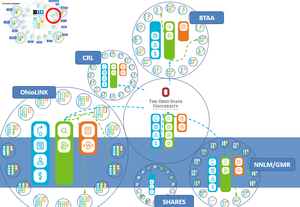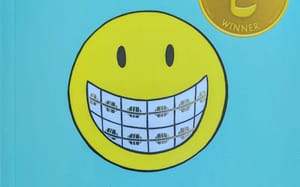Cultural diplomacy is a report from the UK think tank Demos which I finally read on a plane ride this week. It talks about the role of cultural institutions and manifestations in international relations and,while charting international differences of approach, notes that cultural diplomacy is sometimes underappreciated as a ‘soft’ influencer. The report talks about cultural diplomacy, public diplomacy and cultural literacy, and emphasizes the growing importance of the latter two. Public diplomacy aims to reach broad masses of people with a favorable image of a country, and to be effective, has to enlist a broad part of the population in support of it. Hence, in part, the importance of cultural literacy. Clearly, each issue connects to the wider range of ways in which we now communicate.
While hard power is the ability to coerce (through military or economic means), soft power is the means to attract and persuade. As one British expert has put it: ‘Public diplomancy is based on the premise that the image and reputation of a country are public goods which can create either an enabling or disabling environment for individual transactions.’ [14 = Leonard et al]
Libraries, museums and archives are seen to have an important role in UK public diplomacy.
Our national cultural institutions are not static depositories for cultural artefacts; they are active participants in the articulation and communication of our own and others’ sense of identity. Museums, galleries and libraries in particular ‘provide the means by which a nation represents its relationship to its own history and to that of “other” cultures, functioning as monuments to the nation, and as such they have played a pivotal role in the fomation of nation states’. [20 = Reinventing the nation : British heritage and the bicultural settlement in New Zealand / Lynda Dyson in Littler and Naidoo]
And, interestingly, the report recommends support for acquisitions by these organization to maintain the ‘range, quality and contemporary relevance of our cultural assets’. In turn, it recommends that national cultural institutions (such as the British Library) should develop explicit international strategies which take account of government goals.
Now, shortly after finishing this document I was walking through Union Station in Washington DC and was interested to see there an extensive exhibition promoting Northern Ireland and Belfast as tourist and commercial destinations. What was interesting to me was how it was constructed around the Titanic (which was built in Belfast and has become an important part of Belfast’s promoted identity) and various cultural references. There was a reference to the poet Louis MacNeice for example. And to C.S.Lewis. It noted how the Mourne Mountains were an inspiration for Narnia. I imagine most people seeing this did not realize that C.S.Lewis was born in Northern Ireland and I wondered what impact it would have on them.
Aside: it is interesting to see the climbing interest in C.S. Lewis as reflected in continued publication of his works and works about him.
Aside 2: The seventh International JISC/CNI Conference will be held in Belfast almost exactly a year from now (July 10-11, 2008).



